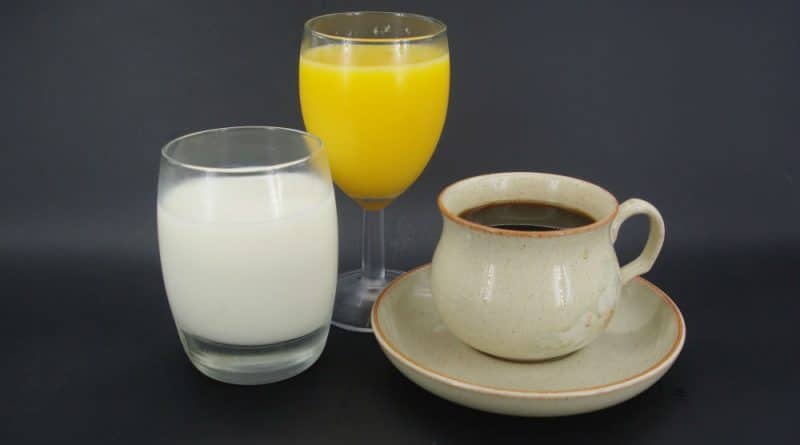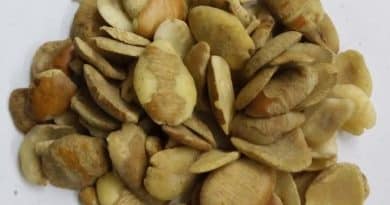Thickened Drinks – What Are They, Why Are They Needed and How Do I to Make Them?
As a Speech Pathologist, I was often asked questions like this by the family members of people who had been newly diagnosed with swallowing difficulty. Most people have never heard of swallowing difficulties, let alone ‘Thickened Drinks’. Swallowing difficulties (also known as ‘Dysphagia’) are not common, but they can affect people of all ages.
There are many known causes of dysphagia but some of the more common ones are stroke; cerebral palsy; Parkinson’s disease; head trauma; surgery and radiation therapy as a result of cancer of the head or neck; and changes to the nerves and muscles of the throat that making swallowing difficult for the elderly.
What Are Thickened Fluids and Why Are They Recommended?
If someone you know has been diagnosed with a swallowing difficulty, chances are they have been recommended ‘thickened drinks’ or ‘thickened fluids. Thickened drinks are normal drinks that have a specially formulated thickener added to them, to make them thicker than regular drinks (this is discussed more later in the article).
They are recommended by Speech Pathologists (also known as Speech Therapists or Speech and Language therapists) for people who can no longer swallow normal fluids safely and who are at risk of having drinks go into their lungs. The consequences of drinks going into the lungs can be strong coughing, choking, or more serious risks such as a chest infection and aspiration pneumonia.
I recently worked with one lady who, only four months before, had been in hospital with her third bout of aspiration pneumonia in less than 10 months. She had been recommended thickened drinks over 12 months ago, but she was still drinking normal drinks at least once a day and small amounts of the drinks were going into her lungs.
This was a problem, not only because of the fluid in the lungs but because naturally occurring bacteria in her mouth traveled with the fluid and into her lungs. Once this occurs, it is only a matter of time before the bacteria causes a chest infection known as aspiration pneumonia. Fortunately for this lady, she finally listened to advice and only drank the thickened drinks that were recommended to her. She has not had a recurrence of aspiration pneumonia since!
So what’s so special about thickened drinks? One reason they work is that they travel more slowly down the throat and are easier for a person to control when they swallow. To get a better idea, imagine this- Someone starts pouring water out of a cup and tells you to catch it in a bowl that you are holding.
You will try to respond as quickly as you can, but there will probably be a delay between when they start pouring and when you have moved the bowl to catch the water. This short delay will probably mean that some of the water lands on the floor. Now imagine someone pouring a thickened drink, like a thick shake, out of a cup.
You would probably catch much more of this liquid because the thick shake flows more slowly out of the cup and gives you more time to respond. This is similar to what happens when someone with swallowing difficulty drinks water versus a thickened drink. When they drink water, the muscles and nerves in their throat don’t act quickly enough and some of the water can go into their lungs.
But when they drink thickened drinks, the fluid moves more slowly and this gives their body more time to control and direct the fluid away from their lungs and toward their stomach. That is one reason why thickened fluids work. As people with swallowing difficulties tend to have difficulty all day, every day, thickened fluids are intended to replace normal drinks.
means people having thickened fluids will in most cases, not be able to drink normal drinks at all or until their Speech Pathologist advises otherwise. Therefore, when someone is on thickened drinks, they should aim to drink as much of them as is needed to maintain normal hydration (1-2 liters).
The Three Levels of Thickened Fluids
When someone is diagnosed with a swallowing difficulty, a Speech Pathologist will recommend one of three different thickness levels. The level of thickness that is recommended varies from person to person. It depends on the severity of a person’s swallowing disorder.
Typically, the worse the swallowing disorder, the thicker the drink. Recently, Speech Pathology Australia and the Dietitian’s Association of Australia worked together to create the Australian Standards for Texture Modified Foods and Fluids*. They developed the following naming and descriptions for the three recognized thicknesses of thickened drinks:
Level 150- Mildly Thick
This level is the thinnest of all the thickened fluids. It pours quickly out of a cup (but slower than regular fluids) and has a fast, steady flow. You can drink drinks of this thickness level out of a cup. Other names used to describe this thickness are Level 1, Nectar Thick, Quarter Thick, Cream, or Semi Thick.
Level 400- Moderately Thick
This level is the second thickest of all the thickened fluids. It is similar to the thickness of a thick shake (but a thick shake becomes thinner when it melts, so people on this thickness level still can’t drink thick shakes!). Drinks of this thickness pour slowly from a cup and have a slow rate of flow. As it is thick, the best way to have this drink is with a spoon. Other names used to describe this thickness are Level 2, Honey Thick, Half Thick, or Thick.
Level 900- Extremely Thick
This level is the thickest of all the thickened fluids in the new thickness guidelines. Drinks of this thickness cannot be poured from a cup into the mouth as they have a very small flow rate. Drinks of this thickness are so thick that they hold their shape on the spoon and so using a spoon to have them is the best method. Other names used to describe this drink’s thickness are Level 3, Pudding Thick, Full Thick, Mousse, or Extra Thick.
How do I buy or make Thickened Fluids?
You have two options, you can purchase pre-made thickened drinks or you can make your own thickened drinks with a powder thickener. Many people also use a combination of both- so they get the benefits of both options.
Pre-mixed thickened drinks
The first option is to purchase pre-mixed thickened fluids. These are available in single-serve cups (sold individually or in cartons) or large bottles. Here are some advantages:
- they don’t require preparation and are ready to drink,
- they don’t need refrigeration until they are opened
- they have a long shelf life (6+ months)
- you can be assured that the drinks have been prepared to the right thickness and they are not too runny or overly thick
These products are particularly appealing to people who are elderly or have a disability and are not able to prepare the drinks for themselves or do not have someone who they can rely on to do it correctly, every 1-2 days. The downside of pre-packaged drinks is that they cost more than plain thickening powder and some brands manufacture only a limited number of flavors.
In Australia, we are lucky to have manufacturers that have over 20 flavors on their menus. However, if you’re not based in Australia, you may have to search online to find the products that suit you.
Make your own thickened drinks
The second option is that you can make thickened fluids using a specialized powder thickener that can come in small tins up to large, economical boxes. These thickeners are specially formulated for people with swallowing disorders. Thickeners like cornflour or Karicare are not recommended for thickening drinks. The reasons for this are:
- it is hard to get drinks to the correct consistency with these products
- they often dramatically change the taste of the drinks they are put into
- they can be difficult to mix in completely
- the drinks may change in consistency (get thicker or thinner) over time or as the surrounding temperature changes. This could result in the drink thinning down or becoming too thick or gluggy and therefore being unsuitable to drink.
A benefit to using specialized thickening powder is that it is cheaper and more economical than buying pre-mixed drinks and you can add it to whatever flavored drink you choose (including beer and wine!!). A disadvantage of using a powder thickener is that many people, especially the elderly or those with a disability may have difficulty mixing the drink to the correct thickness level.
If a drink is too runny it puts a person at risk of having the drink spill down the throat and then goes into the lungs. If the drink is too thick, it may not be appetizing and a person may drink less of it and therefore be at risk of dehydration. Also, drinks that have been pre-mixed using a powder thickener only last a very short time in the fridge- typically 1-2 days.
Some final points about thickening powder. As not all powder thickeners can be used to thicken hot drinks (and you think you might like to thicken hot drinks such as tea), be sure to look for this information when you are making your selection. Also, if you decide to purchase specialized thickening powder, you will find the recipes on the back of the container.
They are quite easy to find and follow. Each pack normally has three recipes describing how to make up the drink to each of the three recommended thickness levels. For example, if you are on Level 150- Mildly thick, the recipe might instruct you to add 1 teaspoon of powder to 200 ml of liquid- then stir.
Just remember, if you are unsure about which thickness level applies to you or your family member, don’t guess, it could be risky for the person drinking it- especially if the drink is too thin. Just ask your dietitian or speech pathologist.
As you can see, there are some things to understand about using and making thickened drinks, however, you have several options and it’s just a matter of finding what suits you or your family member in terms of price, ease of use, and flavor.
References: *Dietitian’s Association of Australia & The Speech Pathology Association of Australia Limited (2007). Texture-modified food and thickened fluids as used for individuals with dysphagia: Australian standardized labels and definitions. Nutrition & Dietetics, 64 (Suppl.2): p553-576
(c) Copyright – Katie Prendergast. All Rights Reserved Worldwide.



